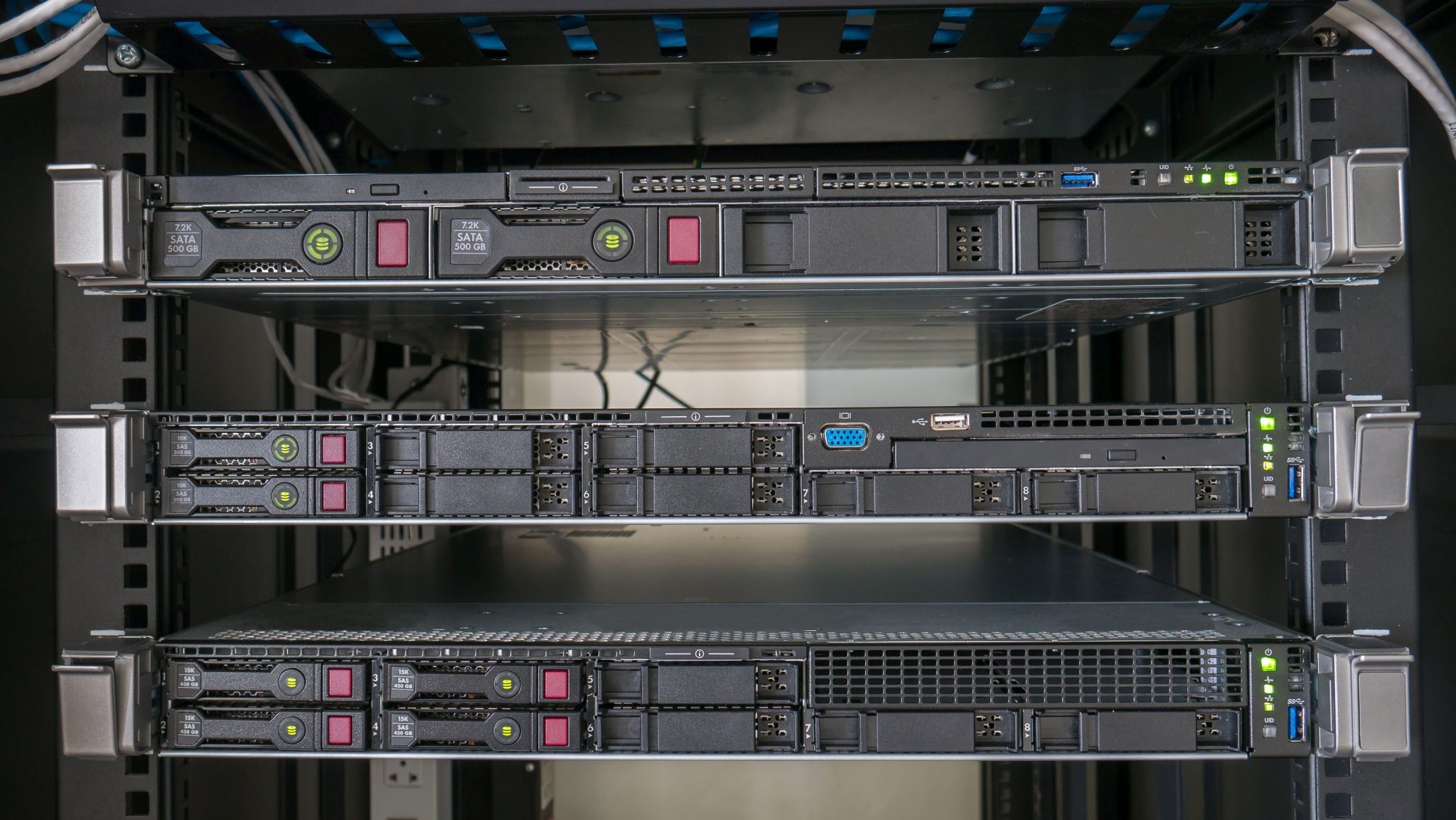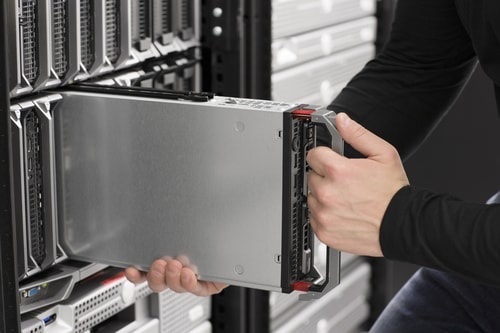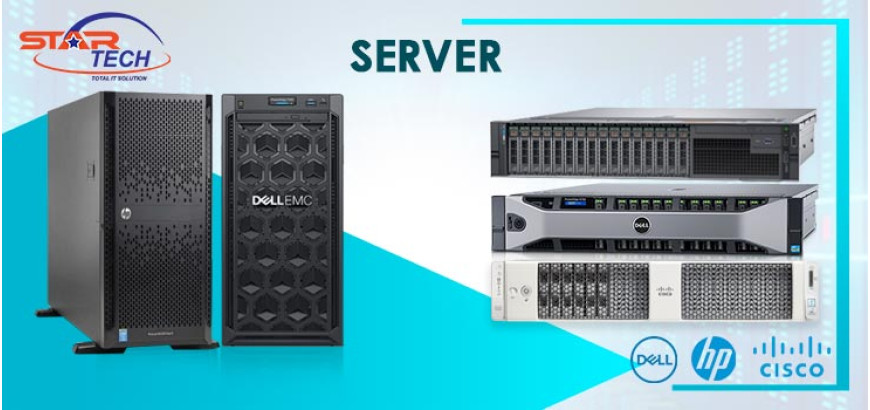In today’s Era, you will be able to get your server from 1 of the 3 forms of server form. The 3 server forms are Rack server, blade server and mainframes. Placing the server in the right way is very important and critical for managing the wiring and other form of maintenance.
Rack server
 The First server form is Rack server. This server form is also known as rack-mounted server. This server’s design is like a normal sized computer which is placed into a rack along side other servers. A rack server is known as general-purpose machine which supports many different arrays of workloads. Generally, rack server takes up less space when compared with tower server for its design. Rack servers are not cased with any heavy weighted cabinets for that reason it can be stacked on top of each other in a single rack. If in any case a server in the rack is out of order or malfunctions, then it is very easy for the user to replace it with a new one and remove the old. The best advantage of the rack server is that the design of the servers and the racks help add more servers as time goes by with the growing of the business and the servers in the same rack can be different models and also be from different vendors.
The First server form is Rack server. This server form is also known as rack-mounted server. This server’s design is like a normal sized computer which is placed into a rack along side other servers. A rack server is known as general-purpose machine which supports many different arrays of workloads. Generally, rack server takes up less space when compared with tower server for its design. Rack servers are not cased with any heavy weighted cabinets for that reason it can be stacked on top of each other in a single rack. If in any case a server in the rack is out of order or malfunctions, then it is very easy for the user to replace it with a new one and remove the old. The best advantage of the rack server is that the design of the servers and the racks help add more servers as time goes by with the growing of the business and the servers in the same rack can be different models and also be from different vendors.
With all the pros, there are also some cons of rack servers. The greatest challenge of rack server is that it requires lots of cables to hold the components together and also all of the components require power for all its work. This proves to be a very challenging task for anyone who is managing the rack server. Properly managing the wires and arranging them properly proves to be a test for any user. This is also the reason for having cooling issues for the servers due to the fact that every component is stacked together which prevents proper cooling to happen resulting in cooling problems.
Tower Server
 The second type of server form is called the Tower server. This server handles the most basic work of a server. There are many advantages when using a tower server. Tower server is very robust and simple to use. This server has low component density which helps with the cooling of the server. This allows the server to avoid any kind of damage, heating or malfunction from occurring. Scalability factor of a tower server is very high and for this reason it is easier to add any server to the simple network. When comparing with other forms of servers, the tower server has the lowest maintaining requirement. The tower server is very easily identified in both using the help of networking and physically.
The second type of server form is called the Tower server. This server handles the most basic work of a server. There are many advantages when using a tower server. Tower server is very robust and simple to use. This server has low component density which helps with the cooling of the server. This allows the server to avoid any kind of damage, heating or malfunction from occurring. Scalability factor of a tower server is very high and for this reason it is easier to add any server to the simple network. When comparing with other forms of servers, the tower server has the lowest maintaining requirement. The tower server is very easily identified in both using the help of networking and physically.
With all these benefits that tower server provides, there are still few drawbacks to deal with. If there are multiple tower servers together then the cable management becomes the toughest and intensive. Each tower server requires its own monitor, keyboard and mouse or keyboard, video and mouse (KVM) to operate and manage the server properly. It also requires its own fan which produces lots of sound that may cause a distraction to the surrounding area. And the major problem with the tower server is that when comparing the other forms of servers, this tower server may be the heaviest.
Blade Server
 The third type of server is the Blade server. The structure of a blade server is modular which can fit into a chassis of a server along side with other modular servers. The module of each blade server has its own processor, memory, and integrated network controllers. The blades may also have Fibre Channel host bus adapter and along with it other I/O ports. This server has more processing power with strategic cabling. Because of the blades being packed together so tightly to the body of the blade server, it sometimes is referred to as the modular motherboards and other name while still being servers. The reason for calling this is because, the body provides sufficient amounts of power, cooling and networking that is shared with the whole parts of the components inside the body. The greatest pros of the blade server is that it provides with large amount of processing density in smaller area. The outcome of this is that the price-to-performance ratio is advantageous with regard to the fact that blade servers are more expensive than rack servers. Using the space properly increases the redundancy that ensures better reliability and availability of application and data. The body of the blade server provides the internal components with hot-swappable, cooling system, controllers and switches. The other advantage of using blade server is that cable management system. It is much simpler and easier to organize when compared to the rack server. To control and monitor the system the blade server provides centralized management console.
The third type of server is the Blade server. The structure of a blade server is modular which can fit into a chassis of a server along side with other modular servers. The module of each blade server has its own processor, memory, and integrated network controllers. The blades may also have Fibre Channel host bus adapter and along with it other I/O ports. This server has more processing power with strategic cabling. Because of the blades being packed together so tightly to the body of the blade server, it sometimes is referred to as the modular motherboards and other name while still being servers. The reason for calling this is because, the body provides sufficient amounts of power, cooling and networking that is shared with the whole parts of the components inside the body. The greatest pros of the blade server is that it provides with large amount of processing density in smaller area. The outcome of this is that the price-to-performance ratio is advantageous with regard to the fact that blade servers are more expensive than rack servers. Using the space properly increases the redundancy that ensures better reliability and availability of application and data. The body of the blade server provides the internal components with hot-swappable, cooling system, controllers and switches. The other advantage of using blade server is that cable management system. It is much simpler and easier to organize when compared to the rack server. To control and monitor the system the blade server provides centralized management console.
Even though with all this pro and advantages there are still cons that are also present with the blade server. The server body and the blades are all owner based (proprietary), meaning that the inner components and the body has to be the same brand. If it isn’t the same brand, then it will cause vendor lock-in to occur. The proprietary nature of the server it prevents or hinders the upgrade of the components without the vendor’s new updates. The blade servers are more expensive with compared with the rack servers. Even though the blade servers provide with lots of features and facilities, it still isn’t a start-up server. The rack servers are considered as the start-up server or low entry cost servers. When using blade servers, an institution or business needs to update the data center so that it can provide efficient cooling and power for the components.
Providing You With The Right Server
We at Star Tech are providing all these types of servers for our customers. We have multiple banded servers in our collect and these brands are, DELL, HP and CISCO. We are providing our customers with the latest models and best quality servers within the most reasonable pricing compared to any other retailers in Bangladesh. You can visit our nearest outlet stores or order online to receive your product. Star Tech is also providing you with home delivery service which allows you to receive your product from the comfort of your home.



Comments
There are no comments for this Article.